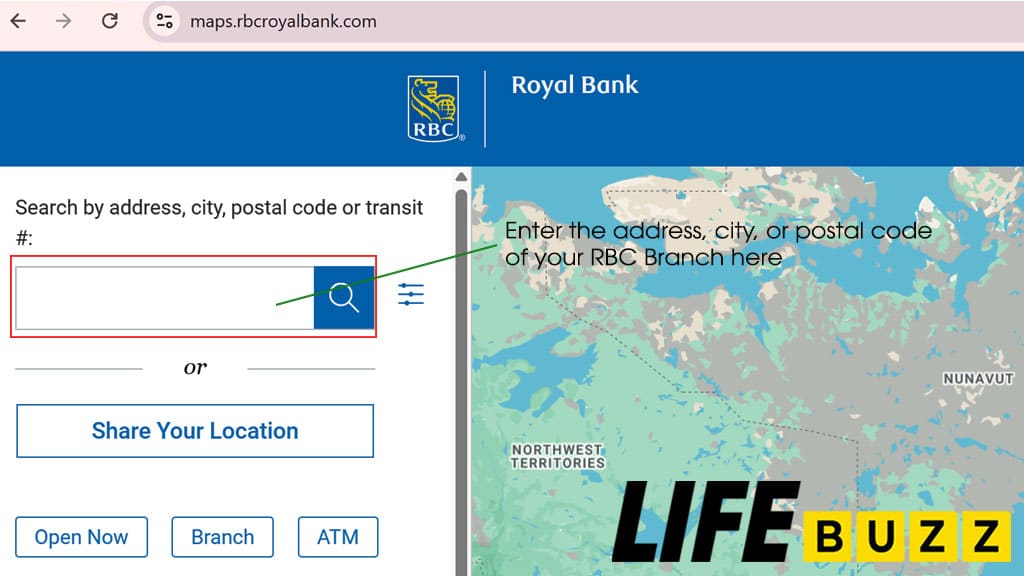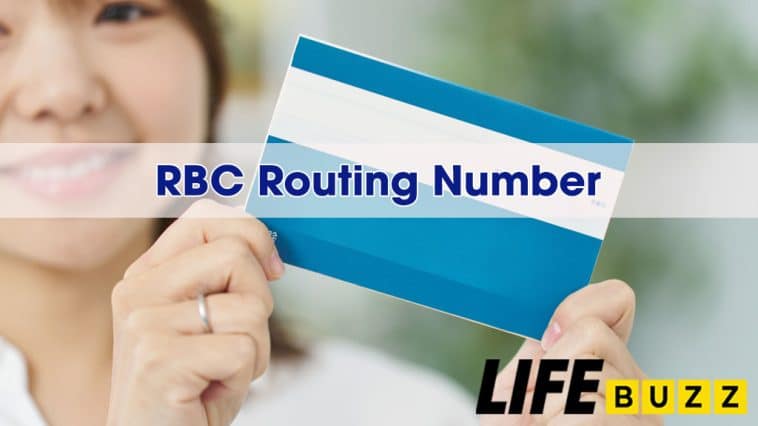Royal Bank Canada – RBC routing number is a critical piece of your financial information, essential for setting up direct deposits, paying bills, or making other electronic payments. This guide will walk you through exactly what an RBC routing number is, explain why it’s important, and provide step-by-step instructions on how to find it.
What is an RBC Routing Number?
An RBC routing number is a numeric code that identifies a specific RBC branch where your account is held. It’s composed of:
- A 3-digit institution number identifying the bank (RBC)
- A 5-digit transit number identifying your RBC branch location
Together, these form the full routing number: XXXX-003, where XXXX is your unique 5-digit transit number. This format is for paper transactions. For electronic transactions, your RBC routing number will be 0003XXXXX.
Breaking Down Your RBC Routing Number
The number is a combination of two key pieces of information: transit number and institution number.
RBC Institution Number
RBC institution number is 003. This 3-digit number. This identifies which financial institution the account belongs to, in this case, RBC.
RBC Transit Number
The transit number identifies the specific RBC branch location associated with your account. If you move and formally transfer your accounts to a new RBC branch, your transit number will change. You must provide this new routing number to anyone who deposits to or withdraws from your account to avoid payment disruptions.
How RBC Routing Number Enables Financial Transactions
Wondering how exactly your routing number enables payments and transfers? Here’s a quick overview of how it works:
- The payer initiates a transaction and provides the recipient’s RBC routing number and account number.
- The routing number identifies which RBC branch to send the funds to. RBC’s systems recognize the institution number 003, confirming the recipient banks.
- The account number tells RBC exactly where to deposit the funds.
- Matching the routing number with the account number ensures that the money is securely deposited into the intended recipient’s account.
So, the routing number effectively serves as an address to direct transactions to the right destination. Provide the correct numbers to avoid any delays, rejections, and funds being deposited into the wrong account.
When Is Your RBC Routing Number Needed?
Having your routing number handy is essential for many financial tasks. First, it is needed to set up direct deposit of your paycheck or other recurring payments into your RBC account. Financial institutions may ask for your routing number along with other identity verifiers to confirm your account ownership. All wire transfer forms also require the recipient’s routing number.
Clearly, always having access to your correct routing number is crucial for smooth financial management and transactions. Let’s move to the next section, where we will detail how to obtain your routing number with RBC.
How to find your RBC Routing Number and Account Number
RBC provides various ways to locate your banking information. Here are the top methods:
Look at Your RBC Cheque
The most traditional way to find your RBC routing number is to locate it on your RBC cheque. The numbers printed along the bottom of your cheque are known as the MICR (Magnetic Ink Character Recognition) line. Here is how to read them from left to right:
- The first set is the cheque number
- The second set is the 5-digit transit number
- The third set is RBC institution number 003
- The final set is your 7-digit account number
Look at the sample cheque below:

- 123: cheque number
- 12345-003: routing number
- 00123456789: account number
The 12345 and 003 combined make your full 8-digit RBC routing number.
Use RBC Online Banking
This is the easiest and most reliable way to get your account information, as it provides the exact numbers needed for electronic payments, and you don’t need to have a cheque. Follow these four steps:
- Access your RBC Online Banking homepage and log in securely.
- Go to “Accounts” and select the applicable chequing account.
- On the right side, choose “Routing Transit Number” under the Actions menu.
- This will display your 9-digit RBC routing number, combining your 5-digit transit with RBC’s 003 institution number.
You can also download an RBC void cheque or a direct deposit form, which also contains these essential numbers.
Log in to the RBC Mobile App
Similar to online banking, the RBC Mobile App provides easy access to your routing number right from your smartphone.
- Log in to the RBC Mobile App.
- Tap on “Accounts” from the bottom menu.
- Select your account and scroll down to “Account Details”.
- You’ll see your 9-digit RBC routing number here.
Your monthly e-statement or paper statement also contains all your account details. The full routing number and account number are typically printed in the top section, near your name and address.
Use RBC Branch Locator
You can access the RBC Branch Locator and then enter the address or postal code of your branch. The branch details will appear with the transit codes.

Combine that with the 003 institution number, and you will have complete routing information. Please note that this method only provides your routing number; it does not give you full banking details for performing financial transactions.
Contact RBC Client Care
If you don’t have access to online banking or cheques, you can visit an RBC branch to receive personalized assistance. Bring your ID and any account documentation, and they can retrieve your number. You can also call the RBC contact centre at 1-800-769-2511. A representative will provide the number after you answer security questions to confirm your identity.
Protect Your RBC Account Details
Follow the practices below to protect your financial information and assets against potential misuse, theft, and fraud:
- Treat your RBC transit and account number as sensitive personal information, like your SIN, credit card details, or passport number.
- Only share these details when absolutely necessary and ensure websites are secure.
- Avoid openly posting or publishing your RBC account specifics across social media or public forums.
- If requested over email or phone, independently double-check the legitimacy of the financial institution being contacted first.
- Set up alerts on your RBC account to monitor all transaction activity for fraudulent payments.
- If you suspect unauthorized access or use of your account details, immediately notify RBC.
Knowing how to share your banking details securely enables smooth and convenient management of your finances.
Next Steps at Lifebuzz!
Lifebuzz provides the banking knowledge, comparative tools and resources to help you bank better, spend smarter, save more and reach your financial goals with confidence.
If you bank with other major institutions, check out LifeBuzz’s handy guide on how to find and use your bank routing number in Canada.
- How to Find Your Scotiabank Routing Number
- How to Find Your BMO Routing Number
- How to Find Your CIBC Routing Number
FAQs about RBC Routing Number Canada
Is my routing number on my debit card?
No, your full routing number and account number are not printed on your RBC debit card for security reasons.
Why do I need to provide my RBC routing number for bills?
When setting up automatic bill payments from your RBC account, you need to provide the payee with your RBC routing number so they can properly identify your account to withdraw the payments from each month.
Is my RBC routing number the same for personal and business accounts?
Yes, your 9-digit RBC routing number will be the same across all your personal and business accounts associated with the same branch location and institution.
How often does my RBC routing number change?
Your RBC routing number only changes if your account gets moved to a different branch location. Otherwise it remains static for your entire banking relationship with RBC.
Can I get an RBC routing number over the phone?
Yes, you can call RBC Client Care at 1-800-769-2511 and an agent can provide your routing number over the phone after verifying your identity and account details.
What happens if I give the wrong RBC routing number for a payment?
Providing an incorrect routing number could result in transactions being rejected, delayed, or funds being accidentally sent to the wrong account. Always double check accuracy.
Can I use the old routing number after switching RBC accounts?
No, once your RBC account is closed, the previous routing number becomes invalid. You must use the new routing number tied to your active account for transactions.
Why does my RBC account have two routing numbers?
Some RBC accounts may show two routing numbers - one for paper transactions and one for electronic payments. Ensure you use the appropriate number.
Can I deposit a cheque with just the RBC routing number?
No, you need both the specific account number and routing number to deposit funds. The routing number only identifies the RBC branch.
Is my routing number the same for all transaction types?
Yes, your RBC routing number stays the same for any electronic funds transfers, including direct deposits, wire transfers, bill payments, and transfers between your RBC accounts.
One exception is that RBC may use a different number specifically for EFT transactions initiated through Interac e-Transfer.
Is My RBC Routing Number the Same Internationally?
RBC issues separate routing numbers for accounts held at RBC branches in other countries, such as the USA. Canadian and international routing numbers are not interchangeable. Always use the specific routing number associated with the country in which you are transacting.


